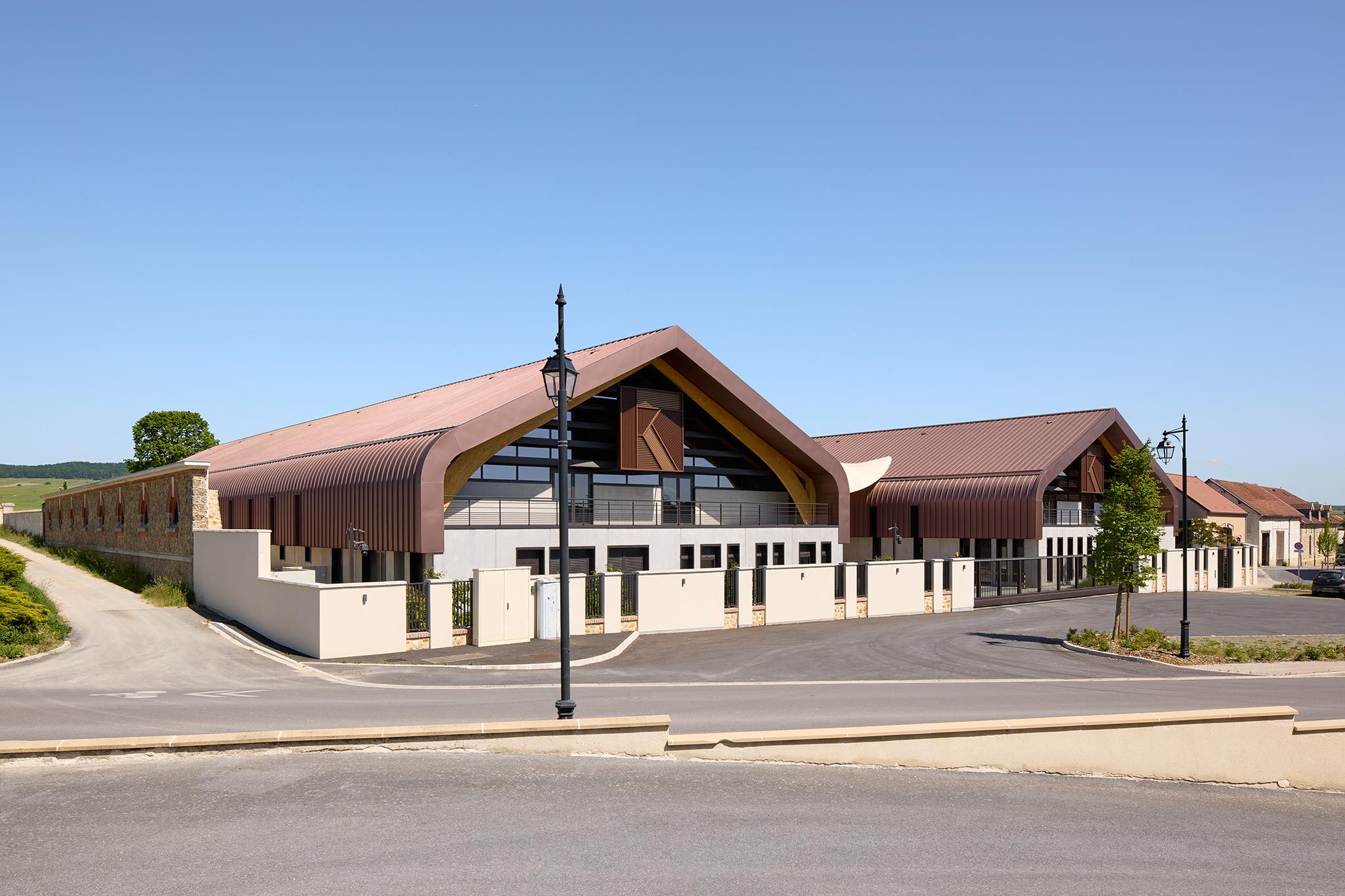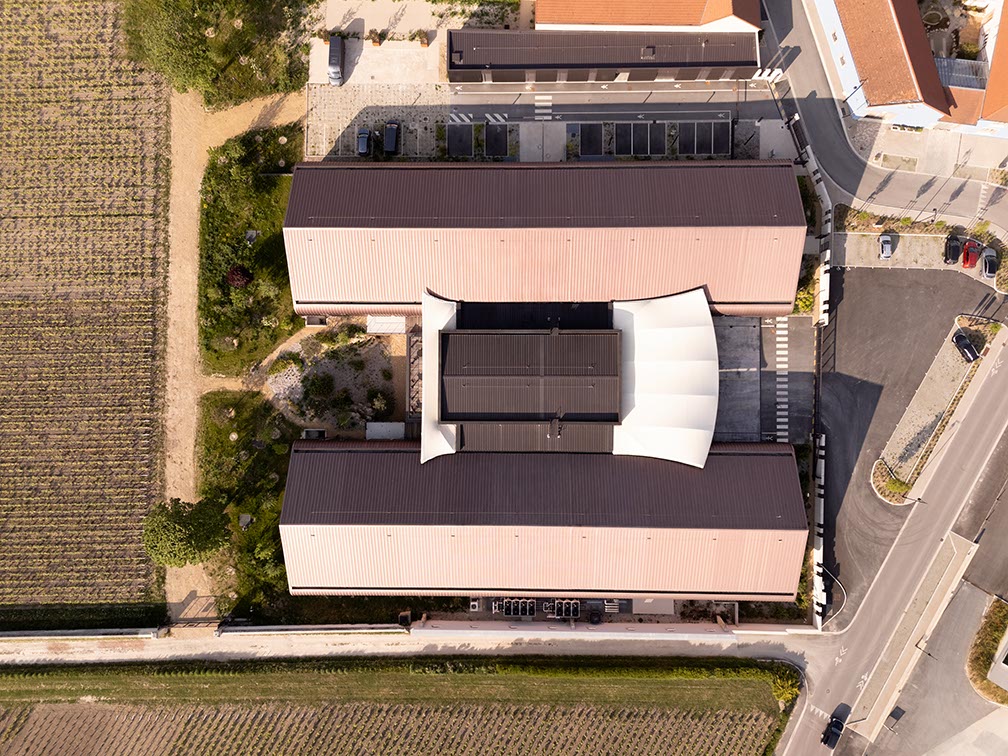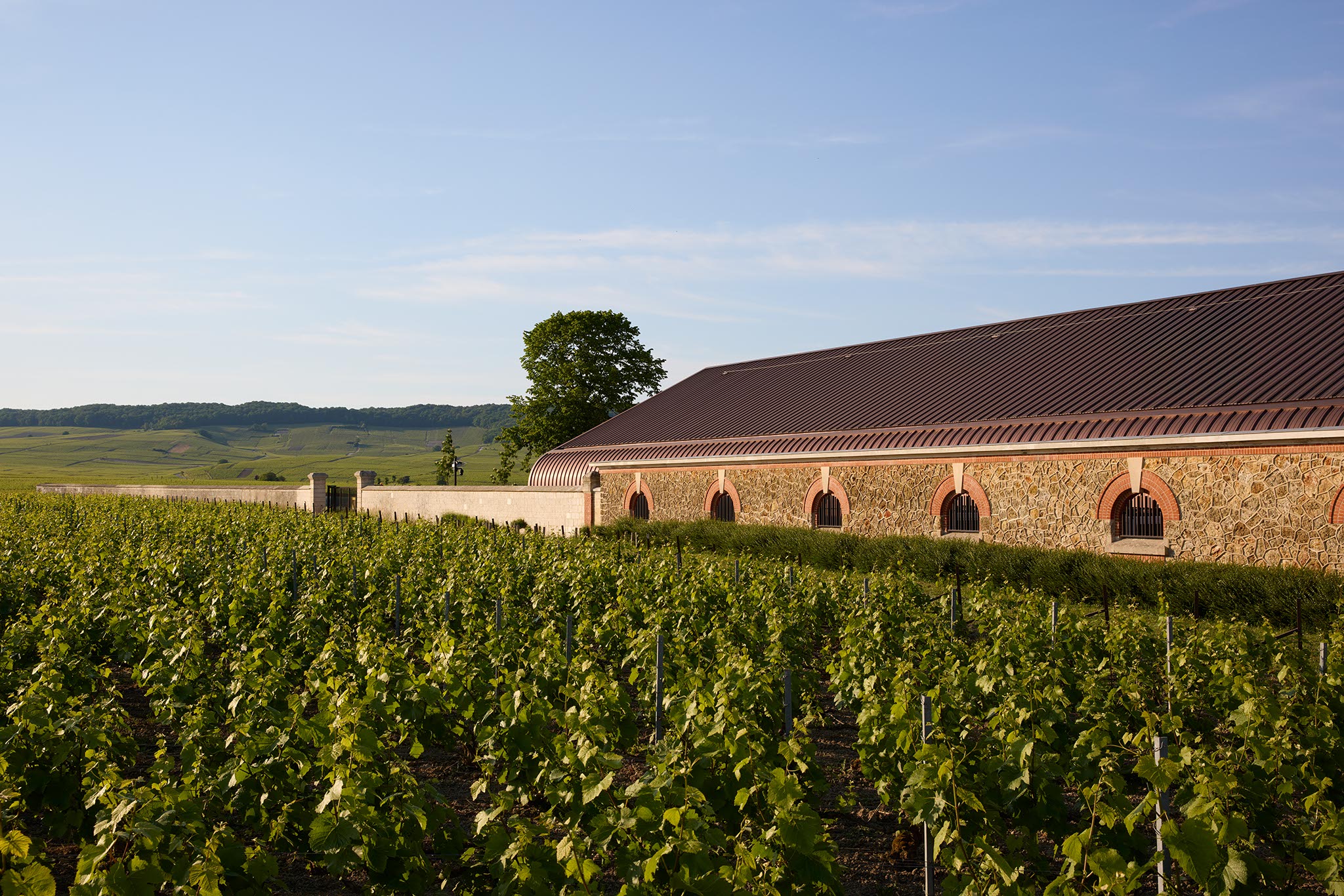


“Joseph” – House of Krug new champagne-making facility in Ambonnay – complements and enhances the Krug Family House project in Reims, delivered by AW² in 2017. In both cases, the objective was to tell the story of a distinguished champagne house and its world, to pay homage to its history and to guide it into the future. In Ambonnay, two new aspects of this rich heritage are explored: the fascinating process of champagne production, and House of Krug’s commitment to integrating harmoniously into the village of Ambonnay, showcasing its local terroir. “Joseph” – named in homage of the champagne house’s founder, Joseph Krug – was designed to restructure and centralise the oenological activities within a modern, functional building that would be pleasant to work in and provide the best possible conditions for the staff. The aim was to showcase the champagne house’s work, in total harmony with its physical and human environment.
The project features two large naves housing the new cellars, whose curved form and copper tonalities blend the architecture into its part urban, part vineyard surroundings. The layout of the building illustrates this duality. On the side facing the vineyards, the interplay of the millstone walls, the expansive rolling landscape and the newly created gardens position the naves in a green setting. On the side facing the village, the facility’s working courtyard opens onto the Place Barancourt, with the carefull design of the perimeter fencing, which showcases the “K patter”, emphasising the finesse of champagne. Inside the wine cellars, one discovers what makes Maison Krug so special: the ageing of wines in oak barrels and their unique champagne-making process which leads to the most generous expression of champagne from the region, from its native landscape, strengthened by its past and fully in tune with the energy of today.
THE ARCHITECTURAL PROJECT:
BETWEEN THE VINEYARDS & THE VILLAGE
The “Joseph” project offers a new perspective of the Clos d´Ambonnay – House of Krug’s historic walled vinyard plot – and its activities, as well as renewed relationship with the village. Its location and orientation reflect the bond that the project aims to forge between the vineyard and the commune. As such, the project features two curved roofs that echo the curves of the oak barrels.
The roofs come to “rest” on a platform symbolising the project’s roots with the site. To protect the courtyard, a lightweight fabric canopy connects the cellars. The central building sets itself apart from the volumes of the wine cellars through its geometry and layout. This organisation creates a workspace on the village side, with the working courtyard opening onto Place Barancourt, and gardens on the vineyard side, in transition with the Clos. The geometry of the volumes has enabled the opening up of viewpoints and natural lighting to be enjoyed in most of the spaces.
Viewed from the village, the building has a vast courtyard and a distinctive urban facade facing Place Barancourt. Viewed from the vineyards, the building appears more horizontal and less prominent, making the most of the topography of the natural terrain, which allows the building to be partially embedded on the side of the Clos. Here, a belvedere terrace provides a reception and tasting area overlooking the vineyards. The architecture is both contemporary and refined, but also in keeping with the scale of the site, blending perfectly with its local context.
ENVIRONMENTAL FEATURES
The project has been awarded a High Environmental Quality (HQE) certification with an ‘Excellent’ rating in recognition of the building’s good practices and sustainable features. The champagne-making facility is powered by renewable energy: an aerothermal heat pump and free-cooling, which limits the use of air conditioning. In addition, new operating methods have been introduced to significantly reduce water consumption thanks to hygrothermal management of the wine cellars.
The choice of materials, high-performance insulation and natural lighting all help to keep energy consumption to a minimum. The champagne-making centre is also equipped with motion detectors for all valves and lighting. A number of architectural features have been designed to limit direct sunlight into the wine cellars, including extended roofs and the installation of louvers.
With its ‘Excellent’ High Environmental Quality certification, the building incorporates a stringent environmental approach through its materials, high-performance insulation and natural lighting. All these elements contribute to minimal and optimised energy consumption. In addition, the building consumes no fossil fuels.
Vinification site – creation of House of Krug champagne-making facility
KRUG / MHCS
9,500 sqm
Ambonnay, France
Photos credit: ©Marwan Harmouche